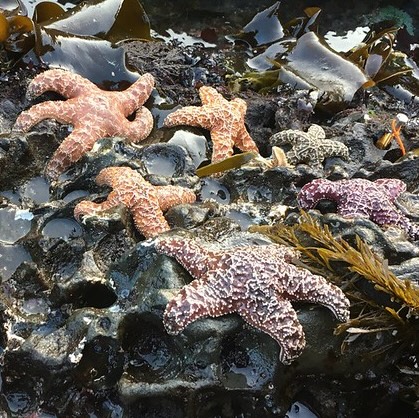Research from Oregon State University and Cal Poly San Luis Obispo indicates that the ochre sea star population is showing signs of recovery along the Oregon Coast. This resurgence follows a significant decline caused by a wasting disease epidemic nearly a decade ago. The findings, published in the journal Ecosphere, reveal a notable increase in young sea stars that are reaching adulthood, marking a potential turning point for the species.
Over the course of a 23-year study, scientists analyzed ochre sea star populations at eight different locations. Lead author Sarah Gravem, now an assistant professor at Cal Poly, noted that many of the young sea stars have matured to the point where population numbers are now at or exceeding levels seen before the epidemic. “After declines in sea star numbers of up to 84% in 2014, we quickly saw an 8,000% increase in young sea stars landing on shore,” she said.
The recovery of these sea stars has implications for the entire intertidal ecosystem. With their populations growing, ochre sea stars are resuming their role as a keystone predator. At three-quarters of the study sites, predation on their primary prey, California mussels, has rebounded. This predatory behavior is vital, as it prevents mussels from overwhelming intertidal zones, thereby allowing other marine species to thrive.
Bruce Menge, a distinguished professor of integrative biology at Oregon State University, emphasized the importance of the sea stars’ recovery. “We showed that sea stars have now grown abundant and large enough that they are eating mussels at similar rates to before the epidemic at most sites in Oregon,” he explained. Despite this progress, he noted that average body sizes of the sea stars remain 25% to 65% smaller than they were prior to the disease outbreak.
While the increase in young sea stars is promising, researchers caution that populations are still less stable from year to year than they once were. This instability is likely due to ongoing fluctuations in young recruits and intermittent resurgences of the wasting disease. Gravem added, “The connection between the sudden decline of ochre sea stars and the baby boom remains elusive. It’s certainly possible they are linked, which would mean these sea stars may be resilient to mass mortality events.”
Wasting disease, which causes sea stars to develop lesions and twisted arms, was traced to a strain of the bacterium Vibrio pectenicida. This discovery was part of a collaborative effort involving scientists from the University of British Columbia, the University of Washington, the U.S. Geological Survey, and the Hakai Institute, and was published in Nature Ecology & Evolution.
The findings from Oregon State University and Cal Poly highlight the resilience of ochre sea stars and the complex dynamics of marine ecosystems in the face of disease and environmental change. As these predators continue to recover, their role in maintaining the balance of intertidal life remains crucial.






